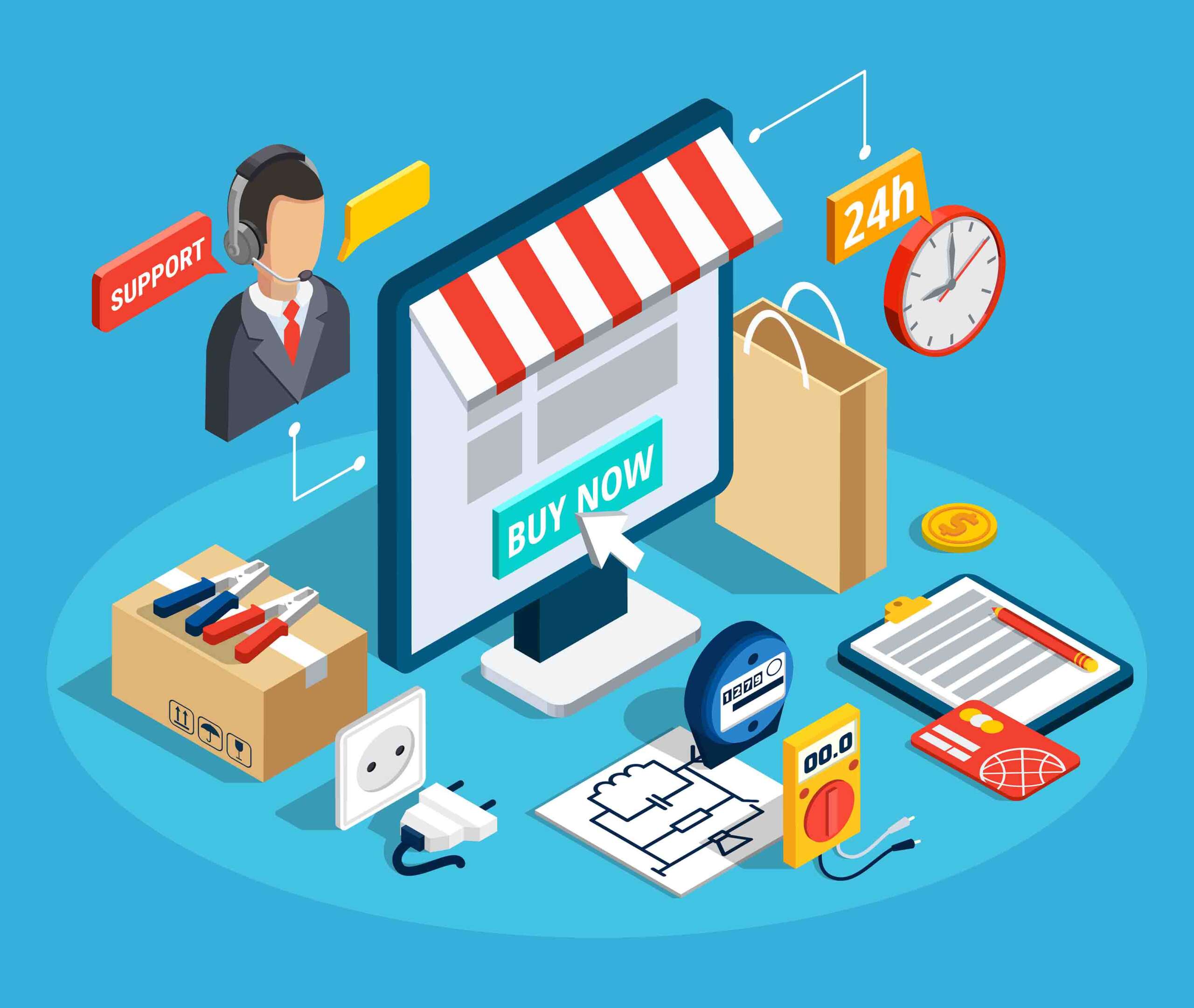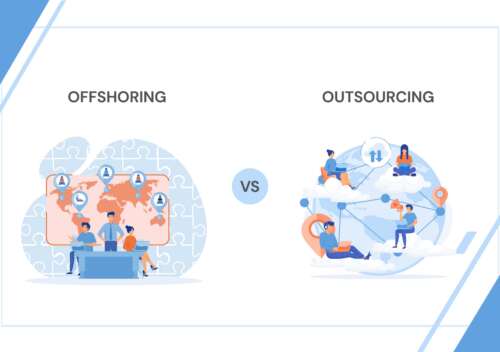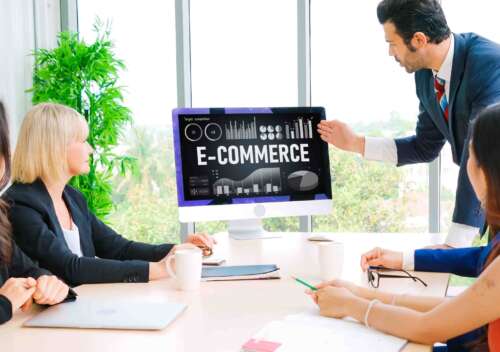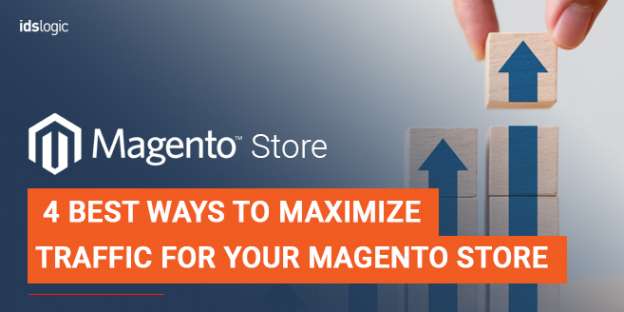Planning to start an e-commerce business in the UK? Here is the complete guide to take the plunge.
Considering taking the plunge towards ecommerce business? It’s worth the risk! However, the odds will be there and therefore a guide to help you play it safe will greatly help.
The guide here will illustrate exceptional ideas, the required checklist, information about e-commerce platforms and risks to avoid while planning for your business. We will also cover a list of marketing strategies that will help your business to grow. We have tried incorporating every resourceful information to set up your e-commerce business in the UK.
Let’s crush this!
What is an Ecommerce Business?
An ecommerce business facilitates online purchases of products and services, eliminating the need for customers to visit physical stores.
From product discovery to research and payment, the entire shopping process occurs online. After purchase, products are delivered to the customer’s chosen location.
E-commerce Business span over a number of industries, offering a wide range of products like appliances, furniture, medicines, and healthcare items to users. Some ecommerce businesses also offer non-physical products and services, delivering them through alternative means, such as sending digital downloads via email.
Why Consider starting your Ecommerce business?
With 60 million users in 2022, the UK boasts the most advanced ecommerce market in Europe. According to several reputed reports, the global B2B ecommerce market is expected to grow by 18.7% from 2021 to 2028, reaching £9.43 trillion.
Despite the substantial growth of the ecommerce sector, there are challenges you must prepare for as you enter the online market. Consumers today are more cautious with their spending, leading many buyers to be more selective in their online purchases.
Additionally, you must consider the increasing business cost that will be an investment later in your ecommerce journey after you choose the platform. You need to invest significantly after choosing your ecommerce platform.
From choosing significant rises in manufacturing and supply chain prices, before launching your venture to planning for a wider market coverage, there are substantial challenges that also present exciting opportunities for entrepreneurs, especially those looking to establish their own ecommerce businesses. Facilities like Ecommerce website development, delivery partner services etc. will be a significant investment later as you grow.
What Ideas You Should Consider for Starting Your Ecommerce Business?

Here is the key to success! Your business idea needs to be much more than merely a thought. It needs to be a well-researched idea that has the potential to surpass the competition. Your business idea must stand out as a problem-solving alternative for users. Added to that, you need to research the market deeply, analyse customer behaviour, gain an understanding of e-commerce platforms, and should work on something that is in the trend.
Here are some tips that will help you brainstorm a significant business idea for starting ecommerce store.
-
Have Multiple Ideas in Mind
Instead of having just an idea, try to have multiple thoughts that you can consider later. This will help to have a wider view and the opportunity to filter out the best idea.
-
Research for Each Idea
After having a bunch of ideas, it is time to research each one of them. When you do this, look for the market type and size of each idea, the growth rate, scalability potential and so on. After having this crucial information, try to find the idea that is the best with all these considerations.
-
Choose a Business Model
It is time to figure out which e-commerce business model will suit your idea. You typically have these choices:
- Business to business or B2B: A business model wherein a company sells its services and products to other businesses.
- Business to consumer or B2C: This involves businesses selling goods and services directly to consumers. It is the most common of all models.
- Consumer to business or C2B: This type of business model involves consumers selling to businesses. For instance, freelance services.
- Consumer to consumer or C2C: This model is all about consumers selling to other consumers on platforms like eBay and Etsy.
-
Giving Shape to Your Idea
This step is all about bringing life to your idea by hiring e-commerce development services. Once you have finalised the idea and the business model, it is now time to solidify the idea with the following steps:
-
Naming the Company
Your business name must remain recognisable. It should be something that should compel users to know more about the business. The ideal way to name a company is to choose a name that is not identical to existing businesses. Choosing a unique brand name would take your business to new heights, and therefore selecting a distinctive name matters.
Moreover, it’s important to keep the name concise to avoid confusion for shoppers. Lengthy business names often fail because people struggle to remember them, or they end up being shortened for simplicity. Instead of leaving the decision to consumers, start with a catchy name that aligns with your brand.
Additionally, consider how the name will appear on a website. If it consists of two or more words, could it be challenging to read when combined? Consider potential unintended meanings before finalising the name.
-
Choosing a Legal Status
To launch an ecommerce business in the UK, it’s crucial to formally register your business with the appropriate authorities. This process establishes the legal entity of your business, defines ownership, and clarifies profit distribution. It also notifies the government of the business and entitle the services for taxes associated with operating an ecommerce business in the UK.
Here are the options for you to choose from:
- Partnership: Two or more partners forming a business and sharing profits equally is a partnership setup.
- Sole trader: In this type of business, a sole person forms a company. The person solely bears losses and earns losses.
- Limited liability company: Limited liability company validates your business to work as a private company. You get shareholders and their assets; which the business needs to protect. Added to that, investors’ liability is determined by the extent of their investment.
- Limited liability partnership: A limited liability partnership is very similar to the partnership, as it functions similarly. However, the company’s finances must be kept separate.
-
Creating Logo and Company’s Visual Identity

Developing your brand identity is important for providing the users with compelling business individuality. So that your e-commerce business should stand out from others. Here is what and how to decide further.
Brand logo: A unique logo will attract clients’ attention towards business and services. A business logo must be recognisable, attractive, not too complicated and obviously not confusing for users. That makes it critical to choose the brand colour, font and every other visual detail thoughtfully.
Visual Identity: This is a broader visual element of your brand beyond just the logo. It encompasses aspects like colour schemes, typography, and other details that should be connected with your brand. This visual identity dictates how your brand is visually represented, especially in terms of website design, to your audiences.
-
Trademark and registration
Now that the above-written suggestions have been performed, it is now time for you to register your venture with the UK government. Added to that, you need to add other legal status including the business address, partner’s share status and other such important details.
The registration process is simple and doesn’t require much time. It can be done online through the official website.
Trademarking your business indicates you are all set to establish a unique brand identity. This makes your business legally entitled to take action if anyone uses your business name without permission.
Another important concern to keep in mind is the cost of services for establishing ecommerce business. Therefore, this stage requires utmost attention when trademarking and registering your business.
-
Create A Tagline
What comes to your mind when you read taglines like “Just Do It” or I’m Lovin’ It? Two famous brands that deal in shoes and mouth-watering burgers, right?
How about such a tagline for your business so that your users can easily resemble your brand? It, of course, is a great idea. Taglines do wonders for businesses as an exceptional marketing move. Taglines create an impact and help impress the users as well. Therefore, work on a tagline for your business in order to get your business noticed among several others.
-
Finalising Marketing Strategy
Once, you have all the above-written details in place, it’s time to devise a marketing plan to target the right audience. Given that you’re entering a market with several established businesses, your marketing decisions need to be exceptionally creative and strategic.
Start by identifying your target audience and conducting research to understand them better. What are their needs and pain-points? What appeals to them and how does it relate to your business? Based on these insights, develop a robust marketing strategy to effectively establish your new e-commerce business.
Performing Competitor Analysis
 It is a competitive e-commerce space today. So, to establish your unique identity as a company that offers e-commerce services, you need to stand out from the competition. This analysis will help you know the following details:
It is a competitive e-commerce space today. So, to establish your unique identity as a company that offers e-commerce services, you need to stand out from the competition. This analysis will help you know the following details:
- Helps estimate all the barriers (entry) into the target market
- Permits you to figure out baseline customer expectations
- Allows finding better growth opportunities
- Offers a chance to identify potential market risks and shortcomings of your business
Now that you know performing competitor analysis is important, you must know how to perform this. Keep on reading to know all the details. Here is how to figure it out.
-
Finding Out Competition
Knowing who you are fighting against gives a fair idea about the competition. It helps to articulate strategies that are worth taking chances. To find out your competition in e-commerce you need to find out the following:
- Direct competitors: These are the businesses selling the same products as yours
- Indirect competitors: These businesses may sell different products but they are fulfilling the same demands to your targeted audience
- Replacement competitors: E-commerce businesses are supposed to offer replacement for your products
-
Performing SWOT Analysis
SWOT is shortened from Strength, Weakness, Opportunity, and Threat. It is a powerful tool that provides businesses with a complete view of competition. Once the list of competitors is available to you, perform your SWOT analysis on the following grounds:
- Website structure of competitors
- Brand value
- Customer experience
- Pricing, shipping and sales strategy
-
Evaluating Competitor’s Website
Customer experience stands as a pivotal element influencing the position of any e-commerce store and ultimately the venture. In the UK, nearly a third of online customers would consider abandoning a brand after encountering an unsatisfactory shopping experience.
Therefore, it’s crucial to scrutinise your competitors’ websites and checkout processes. This analysis should aim to identify the platform they are using as their e-commerce platform such as Magento, OpenCart, etc., the themes and features of their stores, loading speeds, ad placements, and other relevant aspects.
While e-commerce offers numerous advantages, building a successful online business requires significant effort and attention to detail in order to win over the competition.
-
Selecting Delivery Option
The next step is to choose the most suitable method for delivering value to the customers through your e-commerce store.
This decision will impact every aspect of your business and will help you to select concerns like sourcing and storing products, managing them, strategies for selling and packaging to deliver products to your customers right at their doorsteps.
Overall this step is all about figuring out ways to connect to the customers. As an e-commerce business, this is your chance to serve customers with the best offerings so that they can have a fulfilled experience while buying products and services from you.
Following are the Delivery Options you can Choose from:
-
Private Labelling
Private labelling, as the name tells is all about enabling a brand or company to sell products exclusively under its brand. With this method, the brand instructs a manufacturer to produce goods to its specifications.
After production, the owners can have the products shipped to their warehouses or directly to their customers. This approach is ideal for e-commerce businesses selling unique products that they are unable to produce themselves.
-
White Labelling
White labelling involves getting products from a distributor and then relabelling it with your brand name. This method is good for companies looking forward to make their brand name in the industry. White labelling is good for companies that do not want to hire in-house resources and still want to get services from experts.
This saves the company with a huge investment that in-house resource hiring requires. The process also promises services from experienced professionals. This helps companies focus on their core competency while outsourcing their services to experienced labels.
-
Wholesale and Warehousing
Wholesale and Warehousing involves managing your own warehouse, where you receive, store, manage, pack, and ship the desired products to your customers. The method of warehousing and wholesaling is beneficial for a number of e-commerce businesses as it offers a better profit margin, but requires more effort, time, and investment.
For this method to be successful for owners, they need physical space for warehouse and a team to manage all the required operations. Additionally, you’ll need to pay for transporting inventory from the wholesaler to your warehouse.
-
Drop Shipping
Dropshipping has become the most popular choice for online business among entrepreneurs today. The method works in these three steps:
- The customers get on to your website and place an order
- The order then gets transferred to your supplier
- The supplier after getting the order directly ships it to customers
Dropshipping is among the easiest ways to run your online store successfully. With this method, website owners do not need to worry about storing, packaging and delivering the products. Dropshipping’s benefit for owners is that they get an easy and cost-effective option. However, there are some risks associated with it.
The risk comes in case the supplier fails to deliver the order. In such a situation, the delivery responsibility comes to the store owners. Added to that there may be quality and delivery issues later. This may become a threat to the brand.
Which Ecommerce Business Platform to Select?
Building your online store requires to identify a platform to offer e-commerce services.
You can think of this step as establishing a physical shop. As with your physical store, you will carefully choose a location for a brick-and-mortar store, selecting the right platform is crucial for your digital store’s success.
The platform you choose plays a significant role in determining your e-commerce business’s performance. Each e-commerce platform offers unique features and functionalities that impact your business in various ways.
Choosing the right e-commerce platform can be overwhelming due to the multitude of features and factors you need to consider. These factors include design, loading speed, e-commerce features, pricing, SEO tools, hosting, security, free trials, and more.
In order to help you choose the right platform, here are a few suggestions with their brief, advantages and disadvantages.
-
Shopify E-commerce Development
Shopify can be your humble entry into the vast universe of ecommerce business. The platform is an exceptional one-stop-shop for everything e-commerce. You can easily manage, update, store, and deliver your online services using Shopify.
Key features of the development platform:
- The user-friendliness of this e-commerce development platform makes it a beginner’s favourite
- Shopify e-commerce offers a wide range of customisable themes and templates. It thus offers a unique look and feel to the audience
- There is a 24*7 support facility available for users with Shopify
- Shopify provides built-in payment gateways
Advantages of the development platform:
- The platform is affordable providing a range of pricing plans
- Shopify is secured, scalable and offers various payment options
- The Shopify platform is backed by a vibrant community
- Shopify e-commerce does not require in-depth coding knowledge making it handy for everyone
Disadvantages of the development platform:
- Shopify has a transactional fee when using external payment gateways applicable on lower-tier plans
- The e-commerce platform has limited blogging capacity
Pricing of Shopify begins at $29/ month
-
Magento E-commerce Development
Magento is one of the most popular e-commerce platforms for starting your ecommerce business. It has flexibility, scalability and every required feature that is critical for an e-commerce platform’s success. Magento is exceptional not only for store owners but also for users with the following benefits.
Key features of the development platform:
- Magento is easily customisable and therefore offers a plethora of options to tailor the look and feel of the website
- Magento has an exceptional multi-store management feature that simplifies business operations
- The e-commerce platform has advanced SEO capabilities
- With Magento, you can manage multiple stores
Advantages of the development platform:
- Magento is open-source meaning it is free to use
- The unique customisation capabilities of Magento offer a unique user experience
- Magento e-commerce also has a vibrating community just like Shopify
- When it comes to customisation, Magento has unlimited capabilities
Disadvantages of the development platform:
- Learning Magento requires you to master a steeper learning curve
- Magento requires expertise to work on
Magento is available for free and through a paid version to use. Depending upon the requirement of a project, it becomes easier to select the plan.
-
BigCommerce development
BigCommerce is simple yet powerful. This makes BigCommerce the best-suited platform for businesses of all sizes. The user-friendliness of BigCommerce makes it exceptional to use by users and business owners alike.
Key features of the development platform:
- BigCommerce offers a wide range of exceptional templates
- The BigCommerce platform themes are mobile-responsive
- The e-commerce platform has built-in payment gateways
- BigCommerce has exceptional optimisation capabilities
Advantages of the development platform:
- The e-commerce platform is user-friendly
- BigCommerce is a multi-channel selling platform
- BigCommerce grows as your online store grows
- The platform helps you to grow your business
Disadvantages of the development platform:
- BigCommerce charges transaction fees for external payment gateways
- In comparison to other e-commerce platforms, BigCommerce is not very flexible
BigCommerce offers various pricing plans. The basic price begins at $79/month.
-
OpenCart Development
OpenCart is an exceptional solution for enterprises of every size. It suits extremely well SMEs as well as large corporate services. Right from design to managing the product inventory, OpenCart development services will suit the requirements of every business.
Key features of the development platform:
- OpenCart is an open-source platform therefore available for use as per the requirement
- The e-commerce platform provides the option of managing multiple storefronts
- As with any other e-commerce development platform, OpenCart has the support of a vibrating community
- OpenCart supports multiple payment methods
Advantages of the development platform:
- OpenCart provides an unlimited option for categories, and subcategories in order to add a number of products
- The e-commerce option provides ready to use extensions
- It is a lightweight platform providing merchants the option to add products and start accepting orders.
- OpenCart provides scalability to the merchants
Disadvantages of the development platform:
- OpenCart development may sometimes not remain friendly when importing inventory list
- OpenCart e-commerce development may sometimes slow the checkout experience for users
OpenCart is free to download and use
Payment Gateway Integration
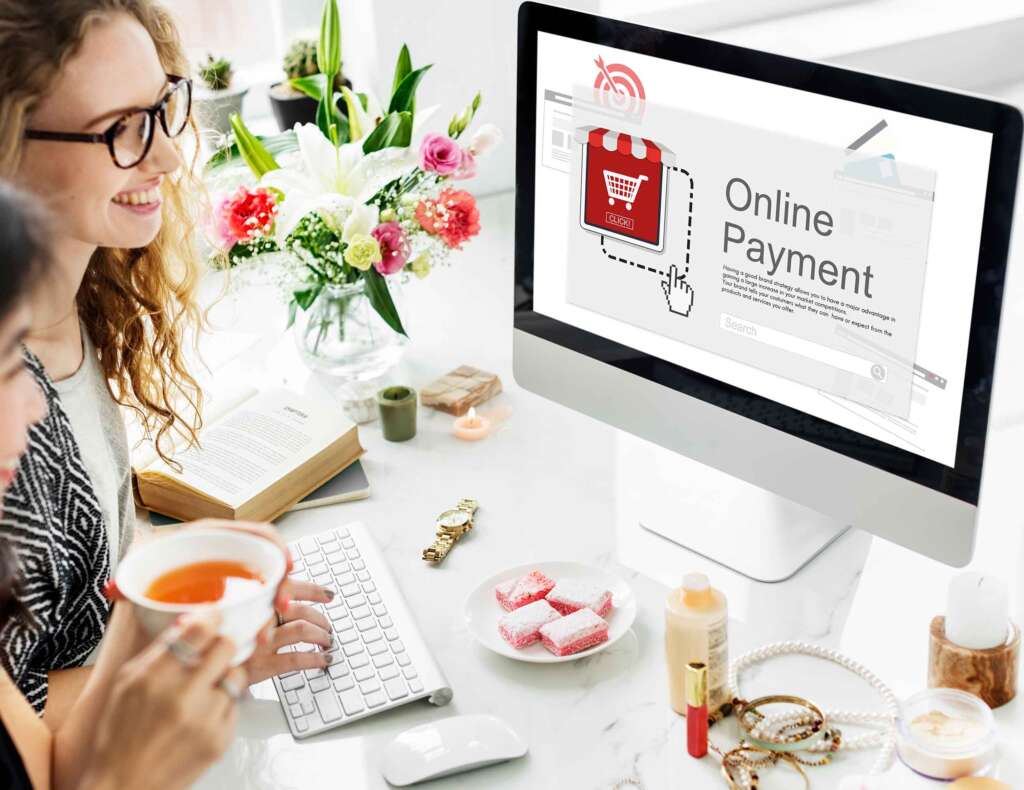 The next in the line is setting up a payment gateway. This will complete your e-commerce store. Integrating a payment gateway is the next thing to take care of after making your store live for users. This will facilitate easy transactions while providing a hassle-free service to the users.
The next in the line is setting up a payment gateway. This will complete your e-commerce store. Integrating a payment gateway is the next thing to take care of after making your store live for users. This will facilitate easy transactions while providing a hassle-free service to the users.
Choosing the right payment gateway is crucial for both you and your customers. It ensures your customers can pay securely using their preferred methods, while you benefit from a smooth and efficient payment processing system.
With so many options available, selecting the best one for your eCommerce store can be a daunting task. However, we are here to provide you with the crucial details on how to set up the payment gateway.
Keep eye on SEO
Search Engine Optimization or SEO stands as the most critical factor influencing the performance of an eCommerce business, making it a crucial aspect of your online marketing strategy. Effective SEO practices not only improve your search engine rankings but also drive substantial traffic to your online store. For targeting local customers, a comprehensive local SEO strategy is essential to have.
It is good to partner with exceptional service providers. They will help to provide result-oriented services. This will add to the brand identity and the quality of your services.
Leveraging Social Media Marketing for Your Business
Today, social media stands out as the most potent tool available for marketing e-commerce services. With its vast global audience, social media offers immense potential for growing your business among the right audience.
By establishing a strong online presence on popular platforms such as Instagram, Twitter, and Facebook, you can effectively target your audience and convert them into valuable, high-paying customers.
Here are other essential components of social media marketing:
-
Partnering with influencers
The rise in social media’s popularity has led to the emergence of influencer marketing. This exceptional marketing option is a potent strategy, which leverages the influence of social media personalities on their followers.
Partnering with these influencers to promote your ecommerce business or products can yield a significant customer base. Therefore, identifying the right influencers on various social networking platforms and collaborating with them can greatly benefit your business.
-
Working with PR Agencies
If you have a substantial budget and aim for extensive market or industry exposure, consider hiring a PR agency. These professionals can help increase your business’s visibility through articles, magazines, press releases, and more.
-
Ad Campaigns
Don’t hesitate to invest in paid advertisements. While organic traffic is valuable, paid ads can significantly increase traffic to your website. Consider hiring a reputable marketing agency to plan and execute high-impact marketing campaigns.
-
Email Marketing
Email marketing is one of the most classic marketing techniques that help capture the data of a huge audience base. With such a huge data in place, it becomes effortless for website owners to contact users and market their services to them.
Building a Website Vs Marketplace Websites
While going ahead in your e-commerce journey, you will certainly think of building a website Vs. using a marketplace website. The comparison is worth to have and therefore deciding on any of the platforms can seem to be a daunting task. However, the comparison here will give you an insight into the pros and cons of both platforms. This will help you in choosing the right option for your requirements.
| Pro/Cons | Building a website | Marketplace website |
| Pros |
|
|
| Cons |
|
|
What are the Mistakes to Avoid When Starting Ecommerce Business?
Here are some of the mistakes that you must avoid when starting your e-commerce development services:
-
Inadequate Financial Planning
Many start-ups encounter difficulties due to inadequate financial planning. Effective money management is essential for business operations. Beyond careful allocation of funds, it’s crucial to ensure that your product has revenue potential that will yield a return on investment. This underscores the significance of thorough market research. In contrast to this, rushing this step can lead to investing in a product that, despite good sales may fail to generate profit.
-
Massive Product Range
Ecommerce businesses just beginning their journeys must consider commencing with a specific niche. They must not add too many products as it can deviate their focus from the business. Focusing on a niche, on the other hand, will help to target the niche audience in a more specific way. If your inventory has too many products, it will get tough to manage. Added to that, you may end up having dead stock as well.
-
Not Researching Enough
In the ecommerce business, the market dynamics change quickly. Knowing all these trends is crucial prior to establishing your ecommerce business. Therefore, researching is the most important part of knowing what to consider and what to avoid when considering e-commerce development.
-
Overlooking Analytics
We reside in an era where data is everything for businesses. The data helps businesses make crucial decisions driven by numbers and statistics. Entrepreneurs have long relied on data for decision-making, but today’s analytics tools have significantly streamlined this process. These tools offer crucial insights into your customer base, including their interests, locations, and online behaviour.
-
Failing to Build Customer Trust
One of the most important concerns for businesses is to build customer trust in services. Taking your prospects successfully is as important as having your e-commerce business in the first place. Being an e-commerce company, you must appear as a reliable and trustworthy service provider. The most effective ways to build customer’s trust in the services are as follows:
- 24*7 customer support
- Offering testimonials
- Showing previous projects on the website
- Displaying strong customer values
- Remaining transparent
- Providing exceptional services
-
Failing to Monitor Competition
As an ecommerce service provider, you must monitor your competition. Having an eye on the competition will also help to know what others are doing in the same space as you are. Additionally, knowing what you are fighting against provides a wider view and room for business to succeed. Right from operation, to services and to management, do know everything about your competition. Focus on competitors that are established and have a wide business reach.
The Way Forward
Getting your e-commerce business off the ground is just the beginning. There are a lot of concerns that you as a website owner need to keep in mind. These considerations will help you set up ecommerce business the right way.
Staying on the top also requires you to keep your sites and services up-to-date. This will ensure the success of your website in the long run.
The suggestions mentioned in this write-up will also help to set your business, the tone of your website and everything else that will take your business towards success!
Happy e-commencing!
FAQs
How Much Does an Ecommerce Business Development Service Cost in the UK?
There is no defined cost for starting an online business in the UK; it can range from £2,000 to £20,000 and may exceed also depending on your e-commerce business’s size and type. Several factors play a part when it is about budgeting for an online store. it includes the cost of the eCommerce platform, payment gateway, hosting, website maintenance, SEO, SSL certificates, marketing, trademark & patents, and more. An important piece of advice is to keep your budget flexible, regardless of your business’s type and size.
Can IDS Logic Help Me with Ecommerce Development Services?
Yes, we offer dedicated services when it comes to providing ecommerce development services. IDS Logic deals in a range of e-commerce development services, which have helped a number of brands get global. We do a complete analysis of a business prior to providing our e-commerce or website development services. This gives us the required insight that can help us map the services as the clients need them. For more information on our services and development approach, you can directly reach us.
Do I Need Insurance with My Ecommerce Business?
You may not require insurance services at first but as your e-commerce business grows, you must consider insuring your business. Having insurance in place keeps your business away from the financial risk. It ensures that your business suffers minimally and can grow successfully even if an adverse situation occurs. On the other hand, if a business grows, it is good to choose an option from the below-listed ones.
-
Property Insurance
Property insurance can assist in covering the replacement costs if there is a loss due to fire or flooding. However, items stored in your home for business purposes are typically not covered by your standard homeowner’s policy.
-
Liability Insurance
If you sell products and a customer experiences an adverse reaction or injury while using them, such as an allergic reaction, liability insurance can provide assistance. This policy would be activated if you need to cover damages or legal expenses.
-
Transit Insurance
If your business relies on large shipments of stock and there is an issue during the delivery process, transit insurance comes in place. Before purchasing transit insurance, determine what your supplier is covering under this insurance. This will include finding out if there is a cover for warehouse damage, if the distributor’s insurance has been covered or not and more to it. Knowing what is not covered will also help to know the insurance in detail.
How Soon Will My Ecommerce Business Pay?
Your ecommerce business will take some time to provide good returns on your investments. During this period, it’s essential to do the hard work to monitoring the website regularly. Part of your effort will also include updating the business as per the development trends.
Additionally, if you do not achieve the sales and conversions you are expecting, do not worry. Stay committed to your business strategies. We suggest working on strategies that offer your customers value when they consider your ecommerce development services. Over time, you will begin to see the desired profits, typically within a couple of years or less.
